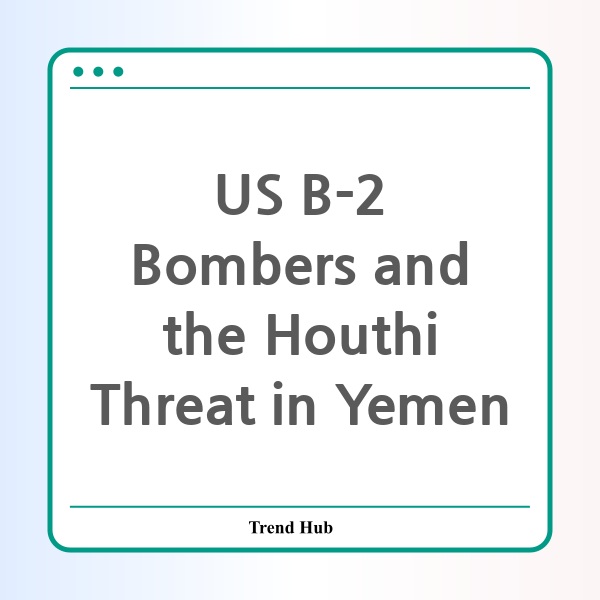* This website participates in the Amazon Affiliate Program and earns from qualifying purchases.

As tensions escalate in the Middle East, the recent deployment of U.S. B-2 nuclear-capable bombers to the Indian Ocean has caught global attention. This strategic military move comes in response to the increasing threats posed by Iran and Yemen's Houthi rebels, highlighting a complex geopolitical landscape that warrants close examination.
The U.S. military has strategically positioned at least six B-2 bombers on the remote British naval base of Diego Garcia in the Indian Ocean. This move serves multiple purposes: it enhances the U.S. military's presence in the region, facilitates ongoing military operations in Yemen, and sends a clear and powerful message to Iran regarding its influence and actions in the area.
The B-2 Stealth Bomber, known for its long-range capabilities and low radar visibility, is a crucial asset for the U.S. military, especially when dealing with countries like Iran, which have a history of robust air defenses. The Pentagon's announcement of the expanded military footprint, including the deployment of aircraft carriers, signifies a notable escalation in U.S. military readiness to confront potential threats.
Experts suggest that this significant military buildup is not merely defensive. The sheer number of B-2s deployed indicates a potential offensive capability aimed at neutralizing threats posed by the Houthis and deterring Iranian aggression. The aircraft's ability to carry heavy munitions, including precision-guided bombs capable of targeting hardened sites, puts Iran's nuclear enrichment facilities at risk.
Moreover, the timing of this military show of force coincides with heightened rhetoric from the U.S. government, underscoring a willingness to utilize military action if diplomatic efforts fail. The U.S. President has openly threatened severe military consequences if Iran continues its support for Houthi rebels and refuses to engage in meaningful negotiations regarding nuclear weapons development.
This escalated military posture raises critical questions about the broader implications for regional stability. With Iran's leadership vowing retaliatory measures in the event of a U.S. strike, the potential for a larger confrontation looms ominously. Analysts argue that while the U.S. seeks to deter aggression through displays of military might, the risk of miscalculation on either side could lead to significant and unintended consequences.
In conclusion, the U.S. deployment of B-2 bombers signifies a pivotal moment in Middle Eastern geopolitics. As the situation develops, the international community must monitor the situation closely, considering the delicate balance of power and the potential fallout from military engagements in a region already fraught with conflict.
* This website participates in the Amazon Affiliate Program and earns from qualifying purchases.